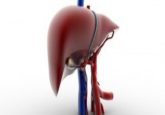Aggressive forms of ductal carcinoma in situ discerned using biomarker ratio imaging microscopy

Researchers have developed a new technique, biomarker ratio imaging microscopy, for distinguishing aggressive and nonaggressive forms of ductal carcinoma in situ.
The study published recently in the Nature journal Scientific Reports, was carried out by Howard R Petty and colleagues from the University of Michigan (MI, USA), who utilized biomarker ratio imaging microscopy (BRIM) to separate potentially aggressive ductal carcinoma in situ (DCIS) from nonaggressive forms.
Petty commented: “A patient with DCIS is typically treated as if she has invasive disease, which is easy to understand. When women hear breast cancer, they’re petrified. And physicians are keenly concerned about outcomes as well. But, DCIS is not the same disease for everyone. If we can identify potentially nonaggressive lesions, perhaps those women don’t need aggressive treatment.”
BRIM works by combining traditional pathology techniques and mathematical analysis. Following fluorescence imaging of biomarkers, a calculation is carried out dividing the number of biomarkers whose expression positively correlates with breast cancer aggressiveness by the number of biomarkers whose expression negatively correlates with aggressiveness. The results of this calculation allow the researchers to identify subpopulations of DCIS lesions resembling either benign fibroadenoma or invasive carcinoma samples.
Specifically in this study, DCIS samples from 23 patients were analyzed utilizing the BRIM technique. This allowed the team to separate the DCIS patient samples into those with a lot of cancer stem cells (potetnially aggressive disease) and those that resembled benign tumors. Overall, 22% of the samples had low scores following BRIM analysis suggestive of slow-growing, nonaggressive disease.
Considering that over diagnosis has been reported for lung, prostate and other cancers, the researchers believe that BRIM could also be useful in providing important prognostic information to practitioners.
To expand on their results the team are planning to conduct a large retrospective study that would allow them to correlate BRIM scores to patient outcomes.
Source: Clark AJ, Howard PR. Identification of lesion subtypes in biopsies of ductal carcinoma in situ of the breast using biomarker ratio imaging microscopy. Sci. Rep. DOI: 10.1038/srep27039 (2016); University of Michigan Health System press release via EurekAlert!




